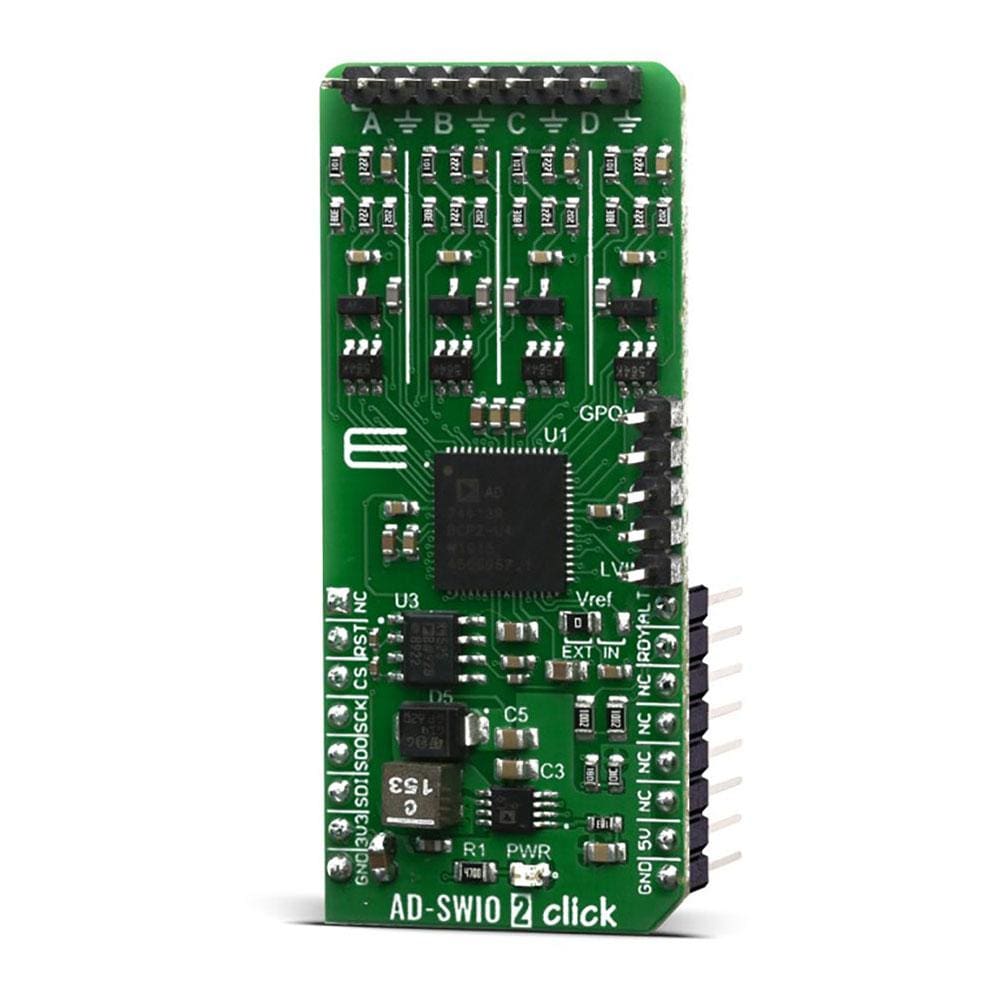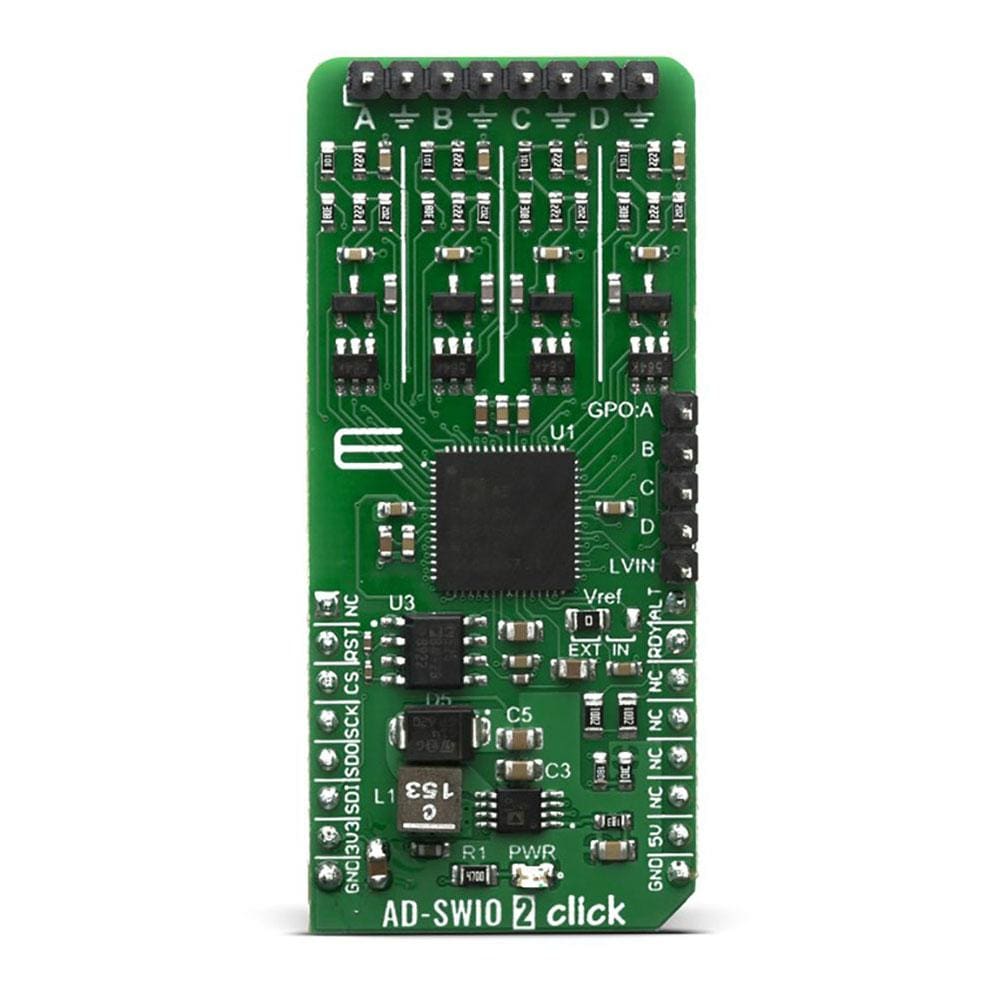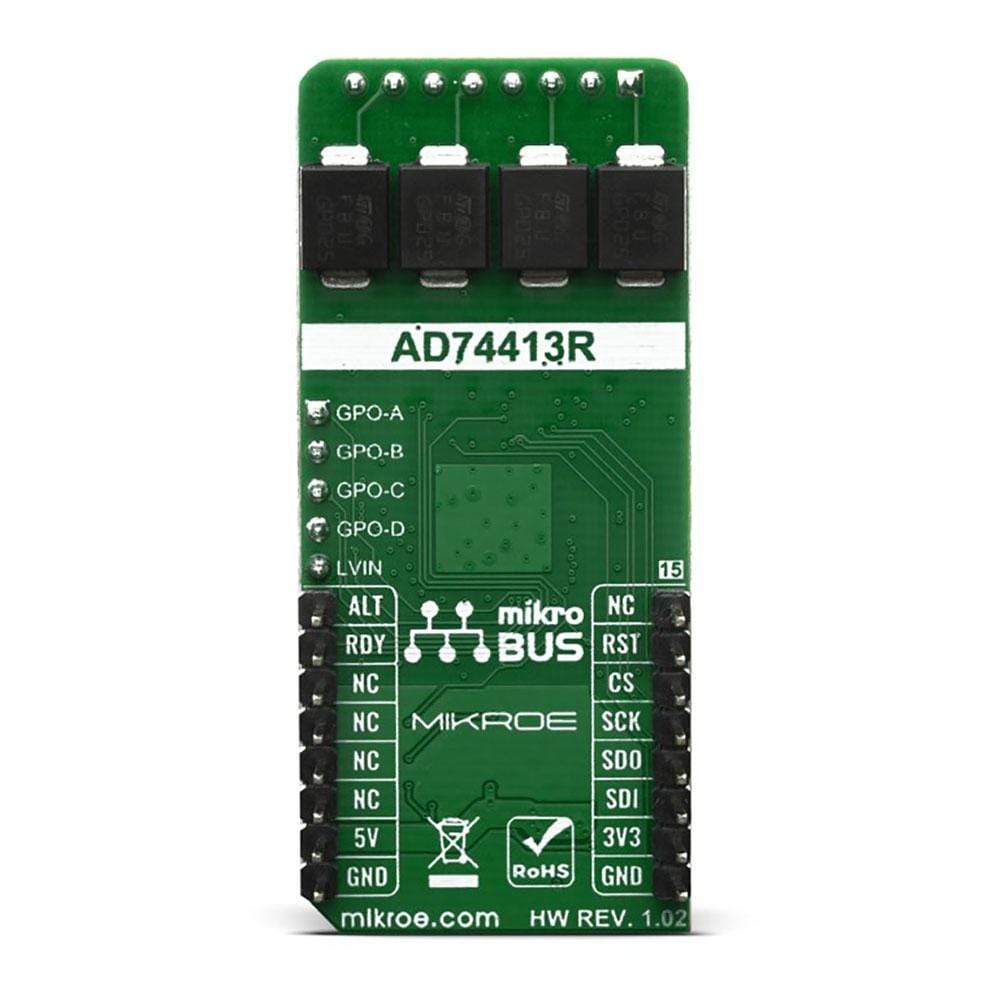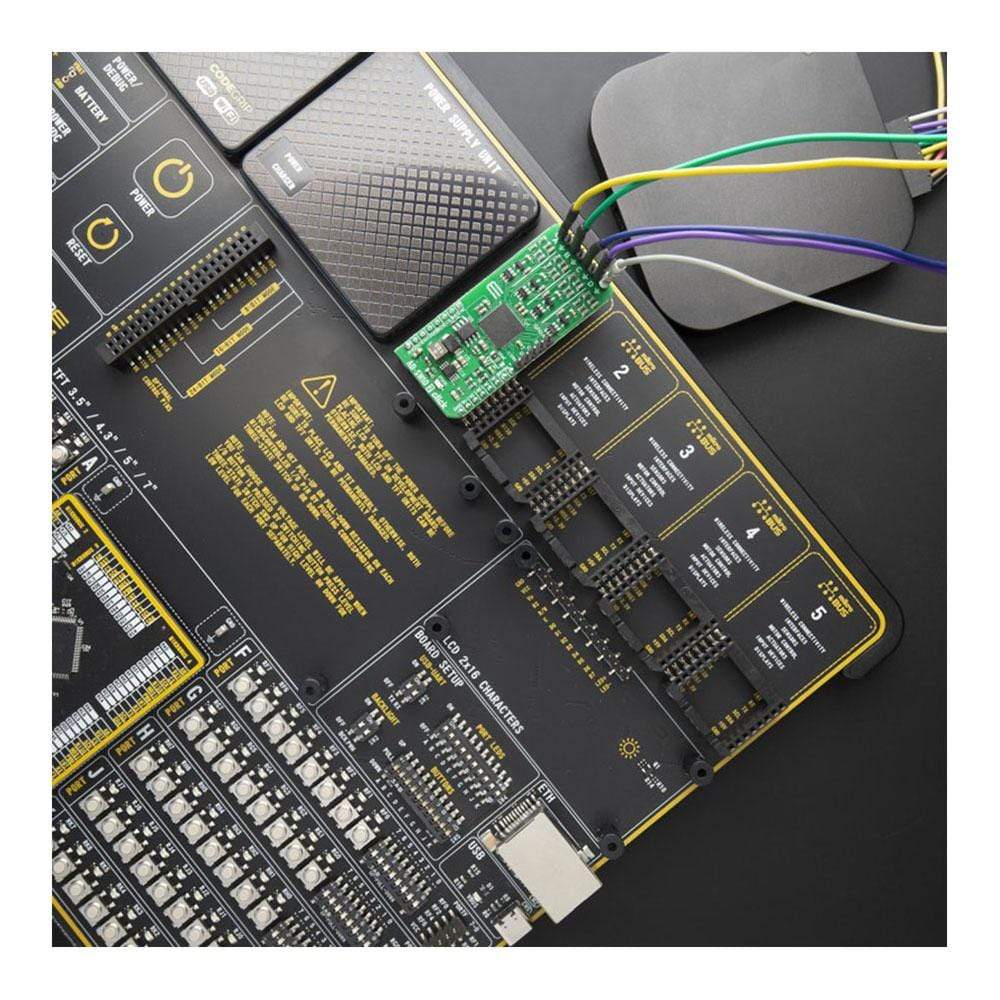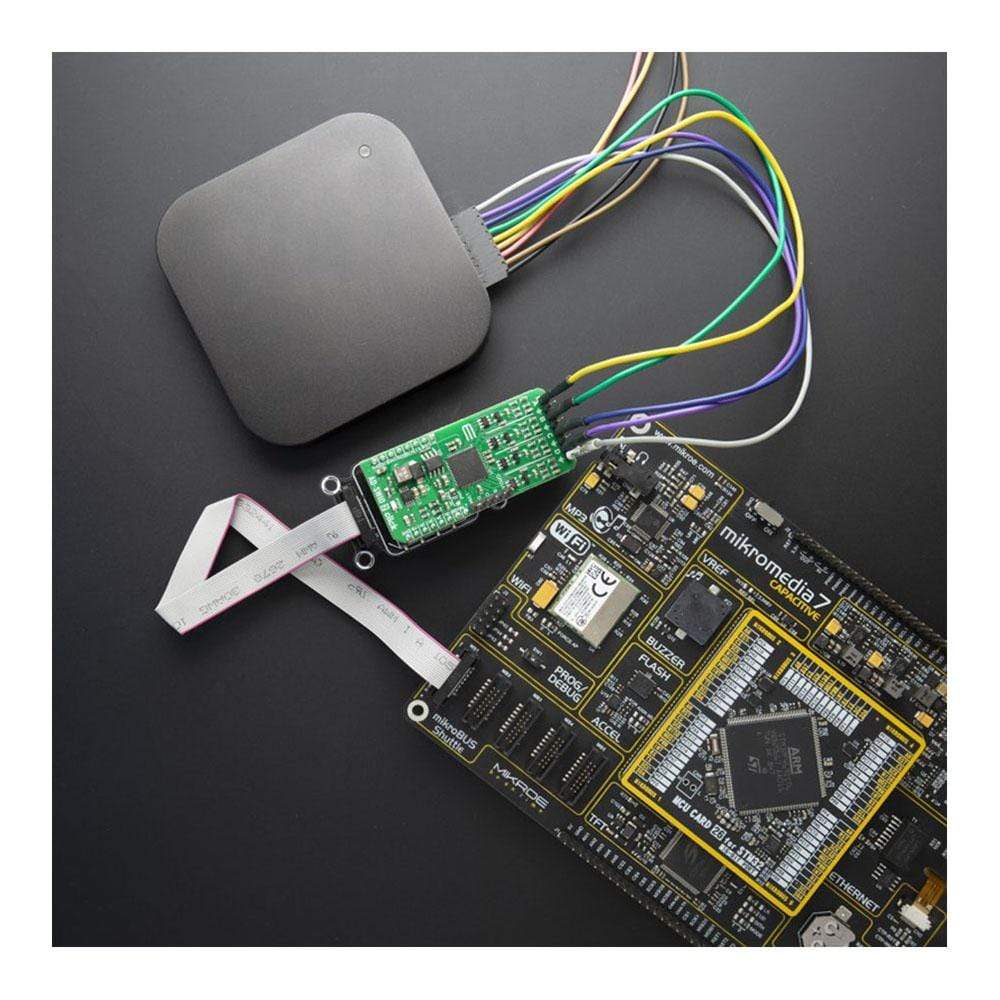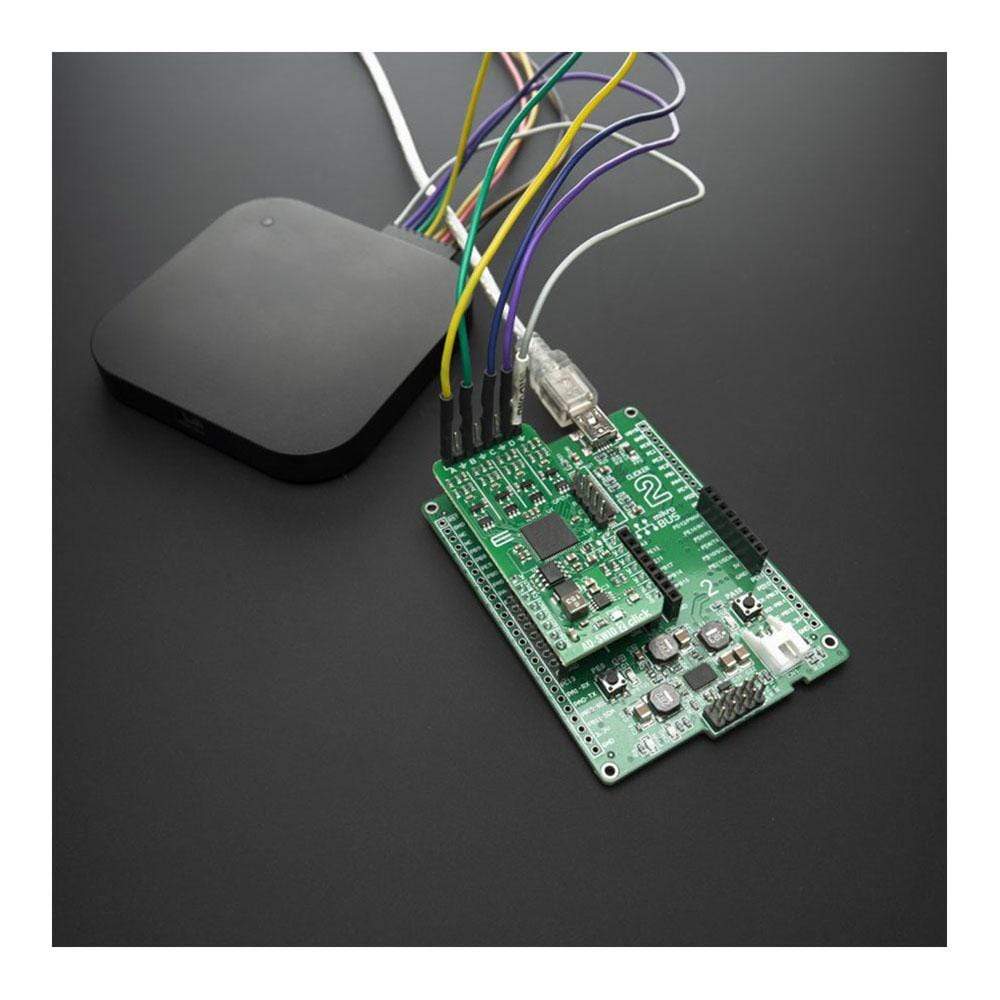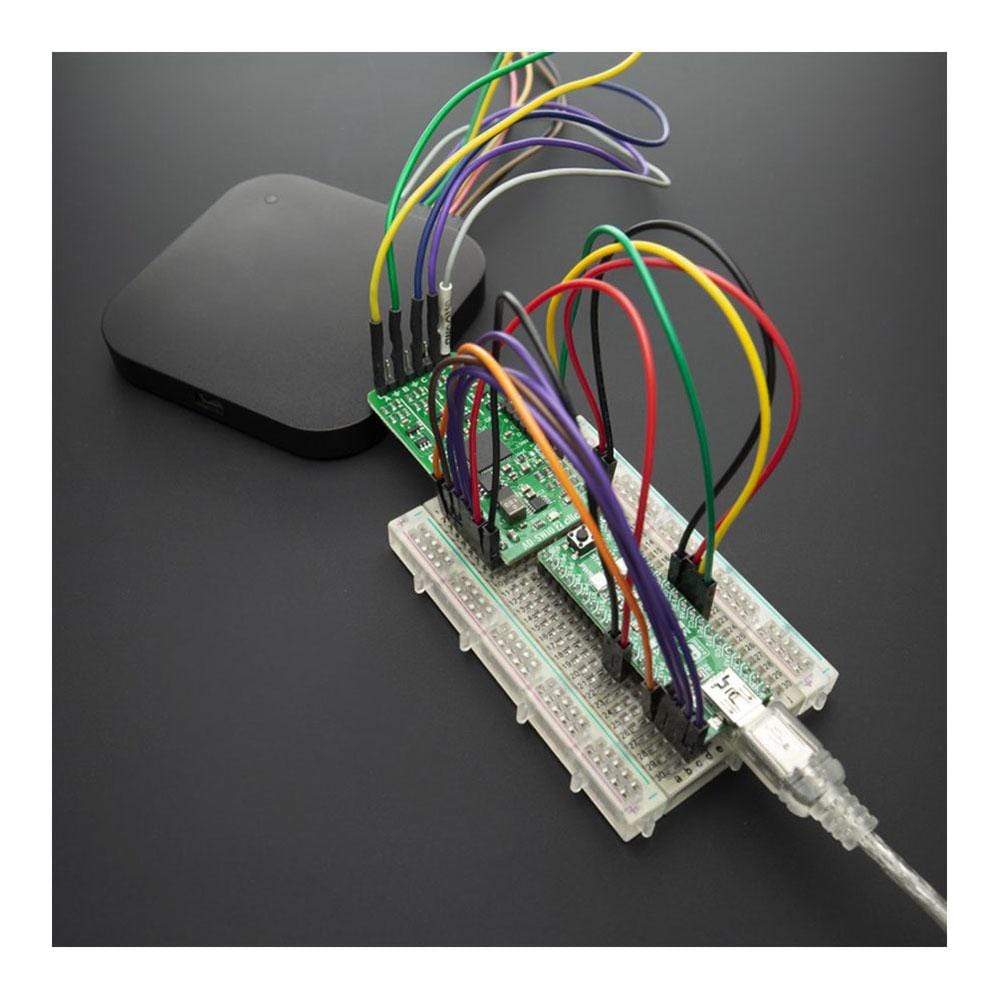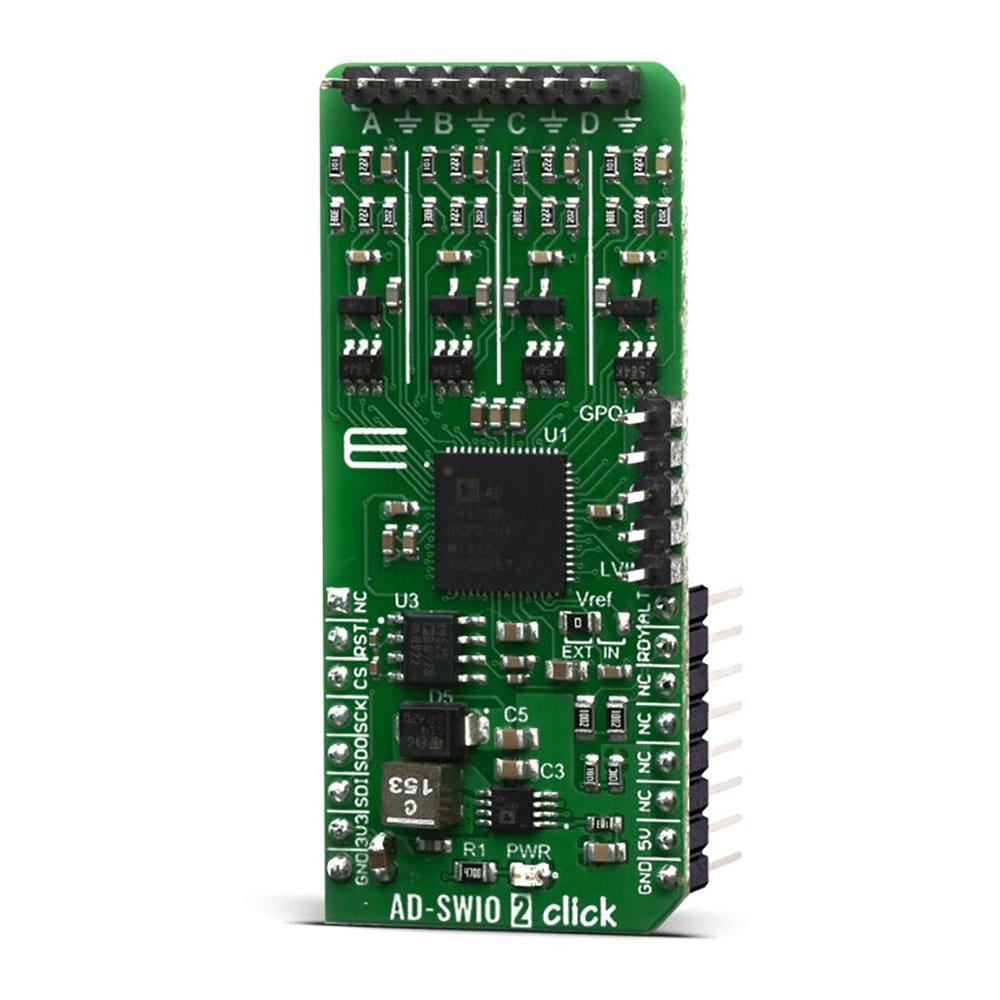
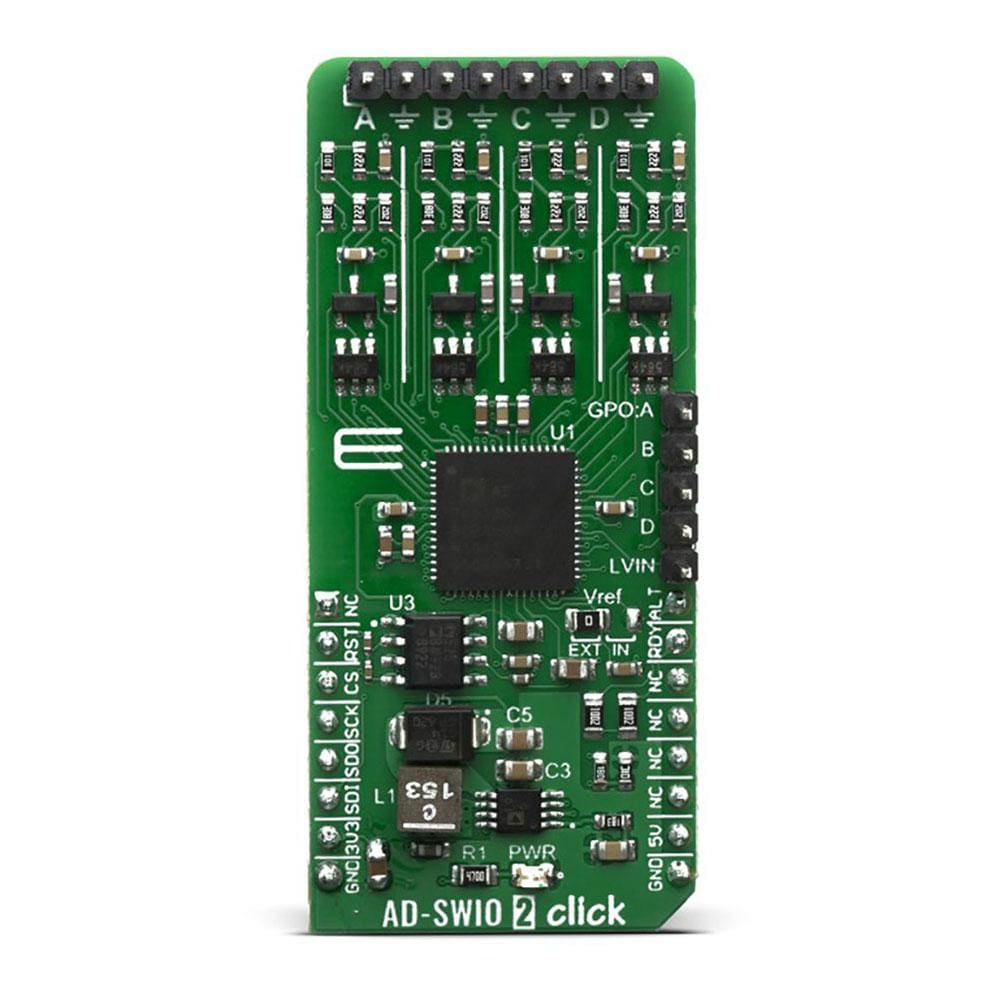
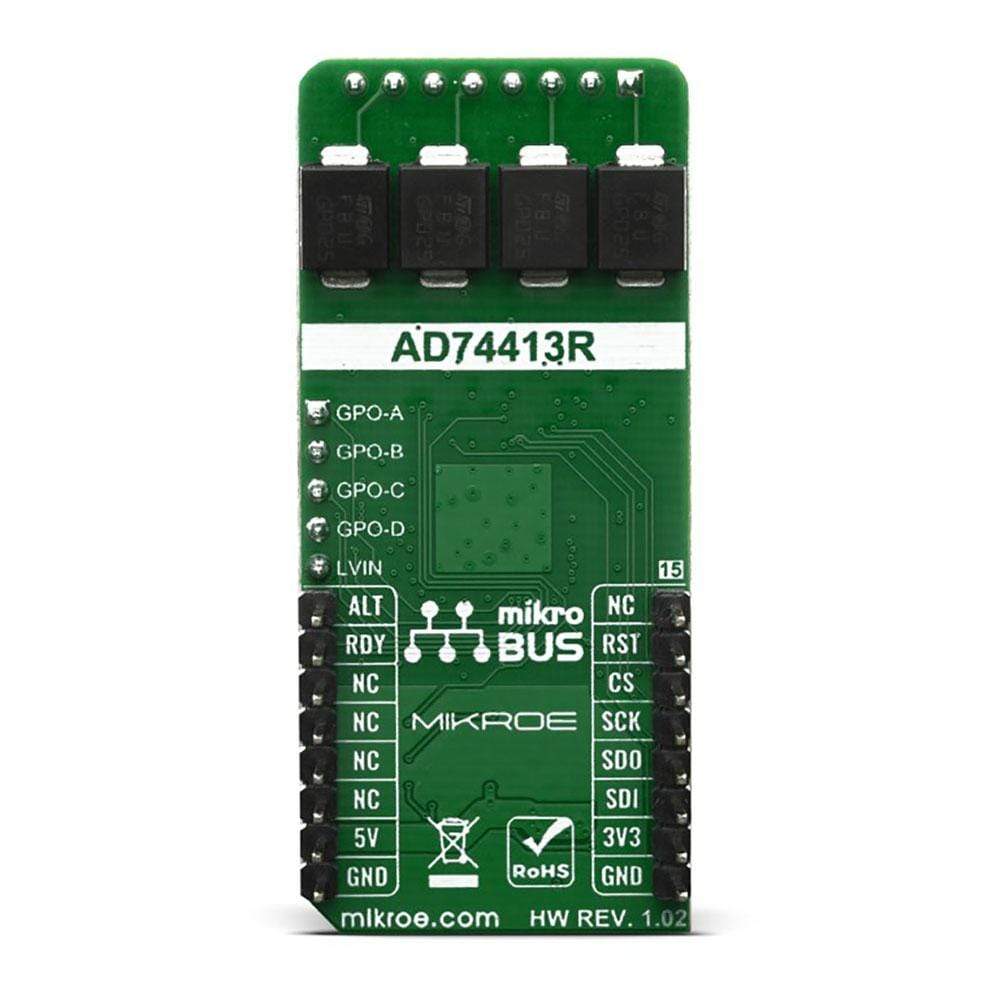
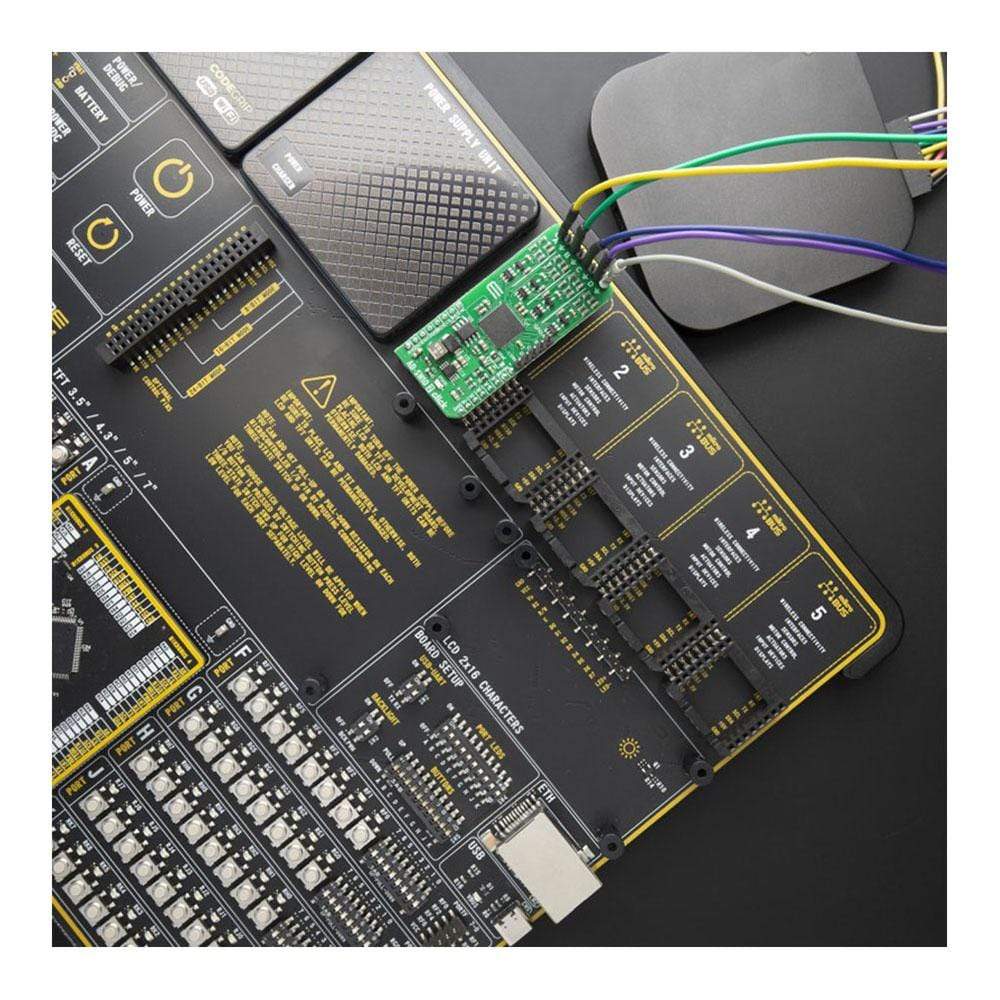
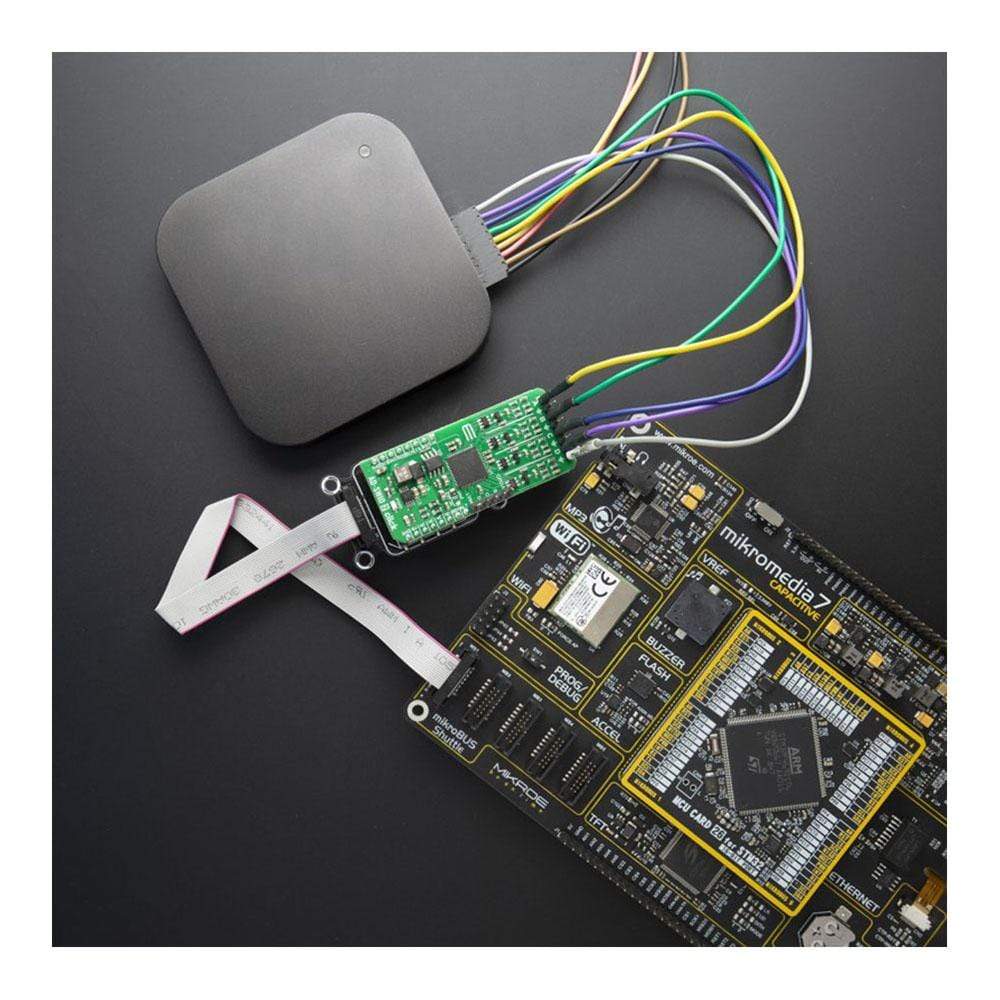
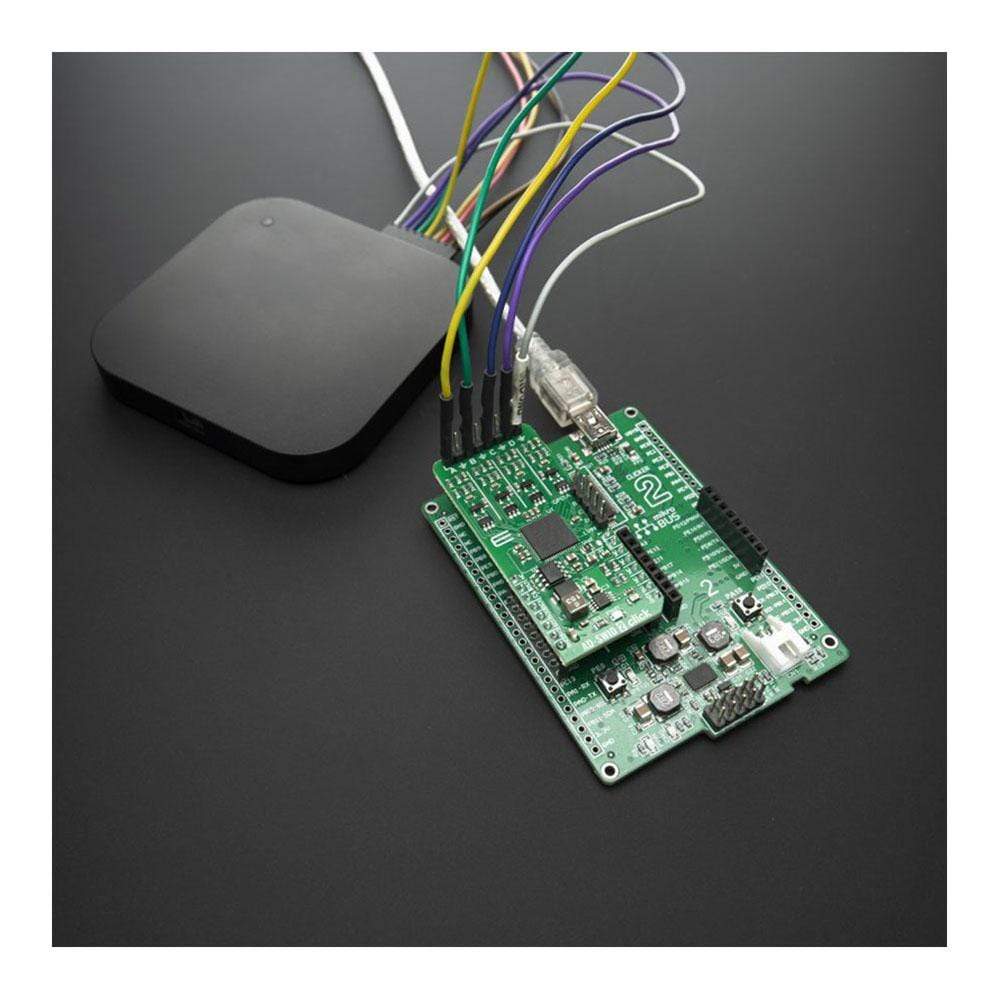
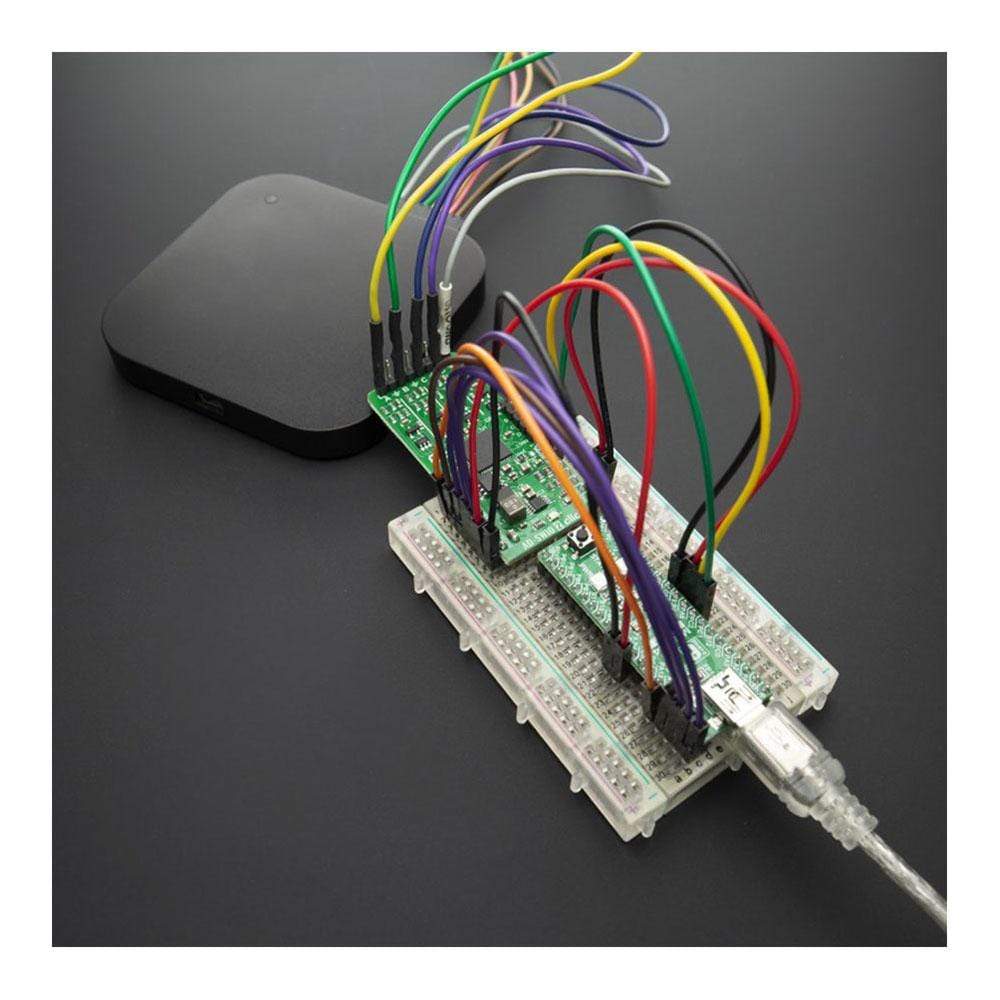
Key Features
Overview
The AD-SWIO 2 Click Board™ is a quad-channel software-configurable input/output solution based on AD74413R, for building and process control application. The AD74413R is a quad-channel software-configurable input/output solution for building and process control applications. The device provides a fully integrated single-chip solution for input and output operation.
The AD-SWIO 2 Click Board™ contains four 13-bit DACs, one per chanal, and 16-bit Σ-∆ ADC. These options give a lot of flexibility in choosing functionality for analogue output, analogue input, digital input, resistance temperature detector (RTD), and thermocouple measurements integrated into a single chip solution with a serial peripheral interface (SPI).
Downloads
How Does The AD-SWIO 2 Click Board™ Work?
The AD-SWIO 2 Click Board™ features a 16-bit analog-to-digital converter (ADC), and 13-bit digital-to-analog converter (DAC) embed in AD74413R from Analog Devices. There are several modes related to the AD74413R. These modes are voltage output, current output, voltage input, externally powered current input, loop powered current input, external RTD measurement, digital input logic, and loop powered digital input.

The ADC can measure either the voltage across the 100 Ω RSENSE or the voltage at the I/OP_x screw terminal of each channel. In high impedance mode, the ADC, by default, measures the voltage across the screw terminals (I/OP_x to I/ON_x) in a 0 V to 10 V range. The ADC also provides diagnostic information on user-selectable inputs such as supplies, internal die temperature, reference, and regulators.
The AD74413R can operate with either an external or an internal reference. The reference input requires 2.5 V for the AD74413R to function correctly. The reference voltage is internally buffered before being applied to the DAC and the ADC. The AD-SWIO 2 Click Board™ contains jumper for selection reference voltage, left position (Default) is selection external reference voltage. External reference voltage provide by ADR4525BRZ, from Analog Devices. The ADR4525BRZ is high precision, low noise voltage references featuring ±0.02% maximum initial error. By switching to the right position of the Vref jumper, the AD74413R is using the internal reference voltage. If The AD-SWIO 2 Click Board™ using internal reference voltage, the REFIN pin must be tied to the REFOUT pin.
The AD-SWIO 2 Click Board™ has four GPO-x pins, one per channel ( GPO-A, GPO-B, GPO-C, GPO-D). Each channel GPO-x pin can be configured to the logic outputs of the digital input functions or a logic high or low output. The GPO-x pins can be set via the GPO_SELECT bits within the GPO_CONFIGx registers. The Click Board™ also contains LVIN ( Low Voltage Input) pin, the measurement voltage range on this pin is 0V to 2.5V.
The AD74413R contains four 13-bit DACs, one per channel. Each DAC core is a 13-bit string DAC. The architecture structure consists of a string of resistors, each with a value of R. The digital input code that is loaded to the DAC_CODEx registers determines which node on the string the voltage is tapped off from and fed into the output amplifier. This architecture is inherently monotonic and linear.
The AD74413R have short-circuit limit in voltage output mode is programmable per channel. The circuit minimizes glitching on the I/OP_x screw terminal when the AVDD supply is ramping or when the use case configuration is changed. This short-circuit limit, you can regulate with positive analog supply on AVDD pin, Output voltage on the AD-SWIO 2 Click Board™ is limited to +20V. The AD-SWIO 2 Click Board™ is equipped with the ADP1613 step-up dc-to-dc switching converters with an integrated power switch capable of providing an output voltage as high as 20 V also from Analog Devices.
Specifications
| Type | SWIO,ADC-DAC |
| Applications | Its a perfect choice for Process control, Factory automation, Motor drives, Building control systems. |
| On-board modules | AD74413R a quad-channel ADC-DAC converter; ADR4525BRZ a high precision low noise voltage reference and ADP1613 step-up dc-to-dc switching converter all from Analog Devices |
| Key Features | Optimized for 16-bit ADC (Analog-to-Digital Converter) and 13-bit DAC (Digital-to-Analog Converter). |
| Interface | GPIO,SPI |
| Compatibility | mikroBUS |
| Click Board™ size | L (57.15 x 25.4 mm) |
| Input Voltage | 3.3V,5V |
PINOUT DIAGRAM
This table shows how the pinout on the AD-SWIO 2 Click Board™ corresponds to the pinout on the mikroBUS socket (the latter shown in the two middle columns).
| Notes | Pin |  |
Pin | Notes | |||
|---|---|---|---|---|---|---|---|
| NC | 1 | AN | PWM | 16 | ALT | Alert Status | |
| Reset | RST | 2 | RST | INT | 15 | RDY | Ready to read |
| SPI Chip Select | CS | 3 | CS | RX | 14 | NC | |
| SPI Clock | SCK | 4 | SCK | TX | 13 | NC | |
| SPI Data OUT | SDO | 5 | MISO | SCL | 12 | NC | |
| SPI Data IN | SDI | 6 | MOSI | SDA | 11 | NC | |
| Power Supply | 3.3V | 7 | 3.3V | 5V | 10 | 5V | Power Supply |
| Ground | GND | 8 | GND | GND | 9 | GND | Ground |
ONBOARD SETTINGS AND INDICATORS
| Label | Name | Default | Description |
|---|---|---|---|
| LD1 | PWR | - | Power LED Indicator |
| JP1 | Vref | Left | Select reference voltage: Left is External reference voltage, right internal reference voltage |
| General Information | |
|---|---|
Part Number (SKU) |
MIKROE-3861
|
Manufacturer |
|
| Physical and Mechanical | |
Weight |
0.018 kg
|
| Other | |
Country of Origin |
|
HS Code Customs Tariff code
|
|
EAN |
8606018718474
|
Warranty |
|
Frequently Asked Questions
Have a Question?
Be the first to ask a question about this.

